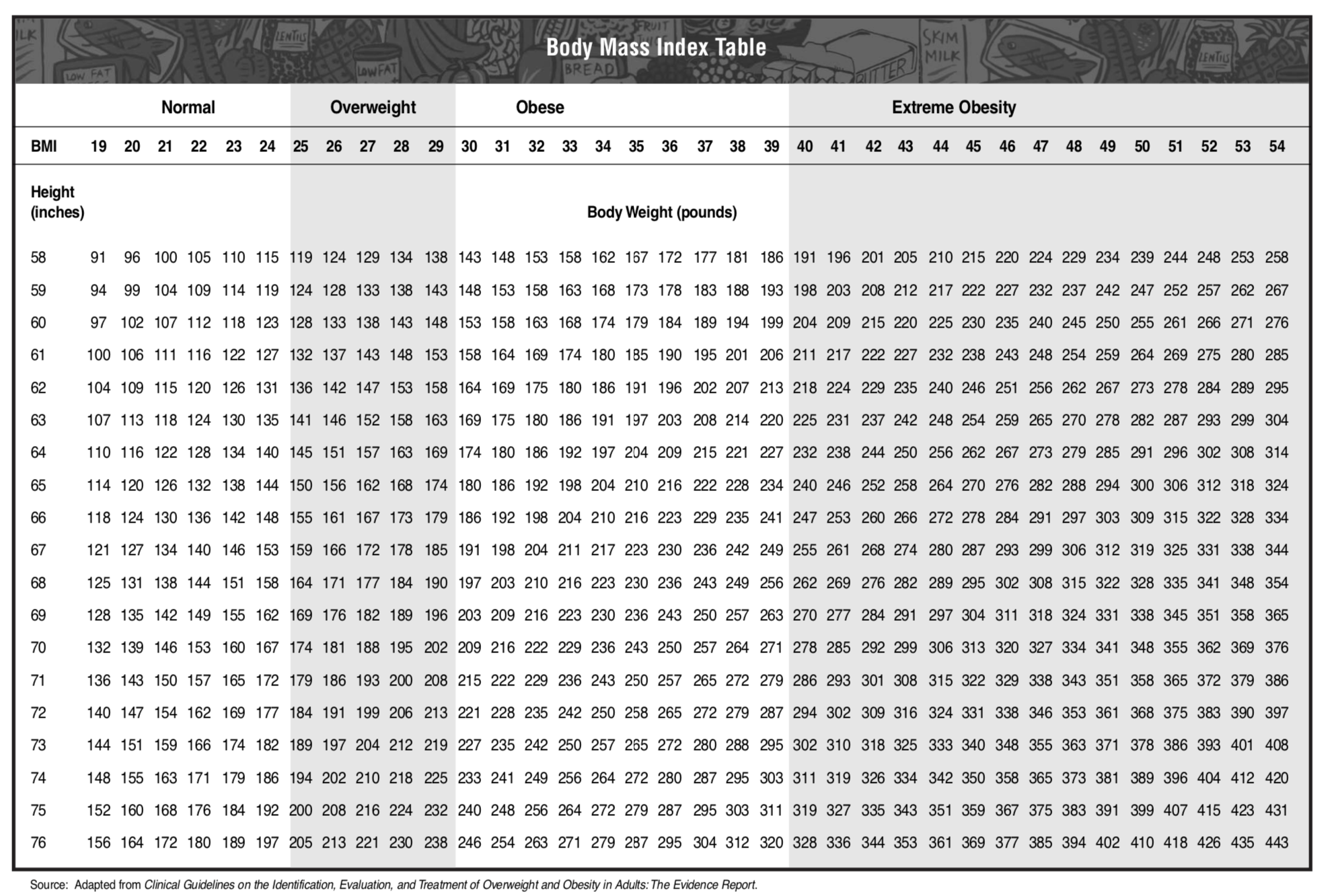
In exercise and physical fitness, we can define body composition by the measurements and percentages of fat, bone, water, and muscle. In general, muscular tissue has less mass than fat tissue. The correlation helps to determine “leanness” Because muscular tissue takes up less space in the body than fat tissue, body composition, as well as weight, determines leanness.
BMI, or body mass index, is the most common and easiest measurement of body composition. You can find it by using your height and weight. The equation is weight in kilograms/height in meters².
Below is a handy chart to help map out BMI:
The measure of BMI indicates, using height to weight, an estimated body mass ratio; that can be categorized by “underweight, normal, or obese.”
- < 18.5 underweight
- 18.5–24.9 normal weight
- 25.0–29.9 overweight
- 30.0–34.9 class I obesity
- 35.0–39.9 class II obesity
- ≥ 40.0 class III obesity
Another easy measure of body composition is the waist to hip circumference ratio, which is literally the circumference of a person’s waist and hip.
Those measurements are conducted by measuring the circumference of the smallest part of the stomach/natural waist (WAIST) and the largest part of the booty/hip (HIP).
To find the ratio, you would divide the waist measurement by the hip measurement.
A ratio higher than 0.9 in men or 0.85 for women is an indicator of cardiopulmonary risk of disease, according to the World Health Organization. As outlined in the chart below, disease risk is measured in accordance with the waist to hip ratio in high, moderate, and low risk. (WHO)
Health risk
-Women: Low 0.80 or lower, Moderate 0.81–0.8, High 0.86 or higher
-Men: Low 0.95 or lower, Moderate 0.96–1.0, High 1.0 or higher
Other measures of body composition can include BIA analysis, DEXA scans, and underwater weighing. BMI and waist to hip ratio are the two easiest measurements. You can use them to analyze health/weight goals for fitness.




